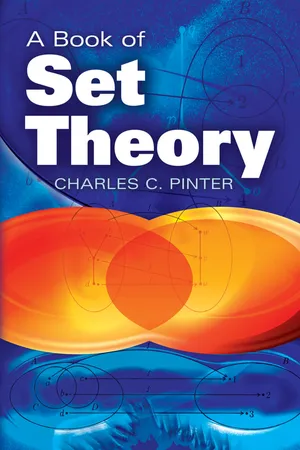
A Book of Set Theory
Charles C Pinter
- 256 Seiten
- English
- ePUB (handyfreundlich)
- Über iOS und Android verfügbar
A Book of Set Theory
Charles C Pinter
Über dieses Buch
Suitable for upper-level undergraduates, this accessible approach to set theory poses rigorous but simple arguments. Each definition is accompanied by commentary that motivates and explains new concepts. Starting with a repetition of the familiar arguments of elementary set theory, the level of abstract thinking gradually rises for a progressive increase in complexity.
A historical introduction presents a brief account of the growth of set theory, with special emphasis on problems that led to the development of the various systems of axiomatic set theory. Subsequent chapters explore classes and sets, functions, relations, partially ordered classes, and the axiom of choice. Other subjects include natural and cardinal numbers, finite and infinite sets, the arithmetic of ordinal numbers, transfinite recursion, and selected topics in the theory of ordinals and cardinals. This updated edition features new material by author Charles C. Pinter.
Häufig gestellte Fragen
Information
1 BUILDING SENTENCES


